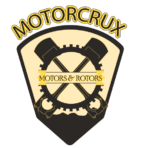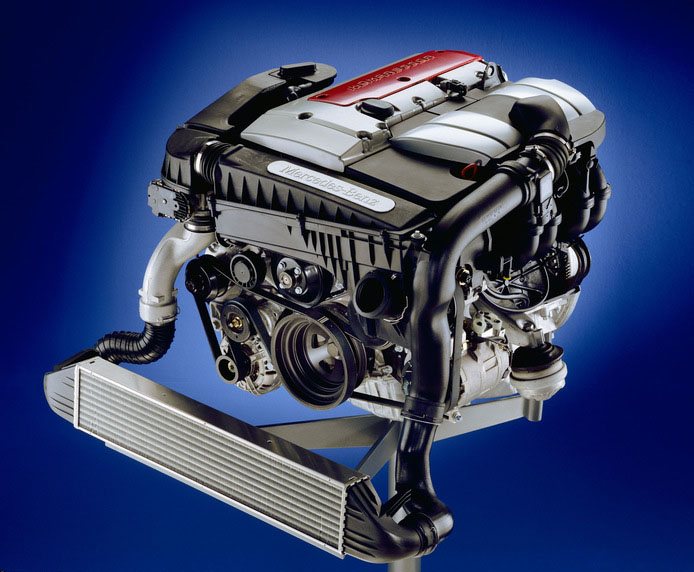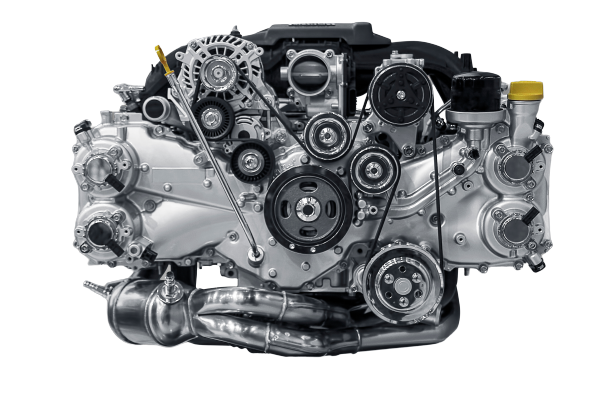Best Automatic Transmission: A Comprehensive Guide to Choosing the Right One
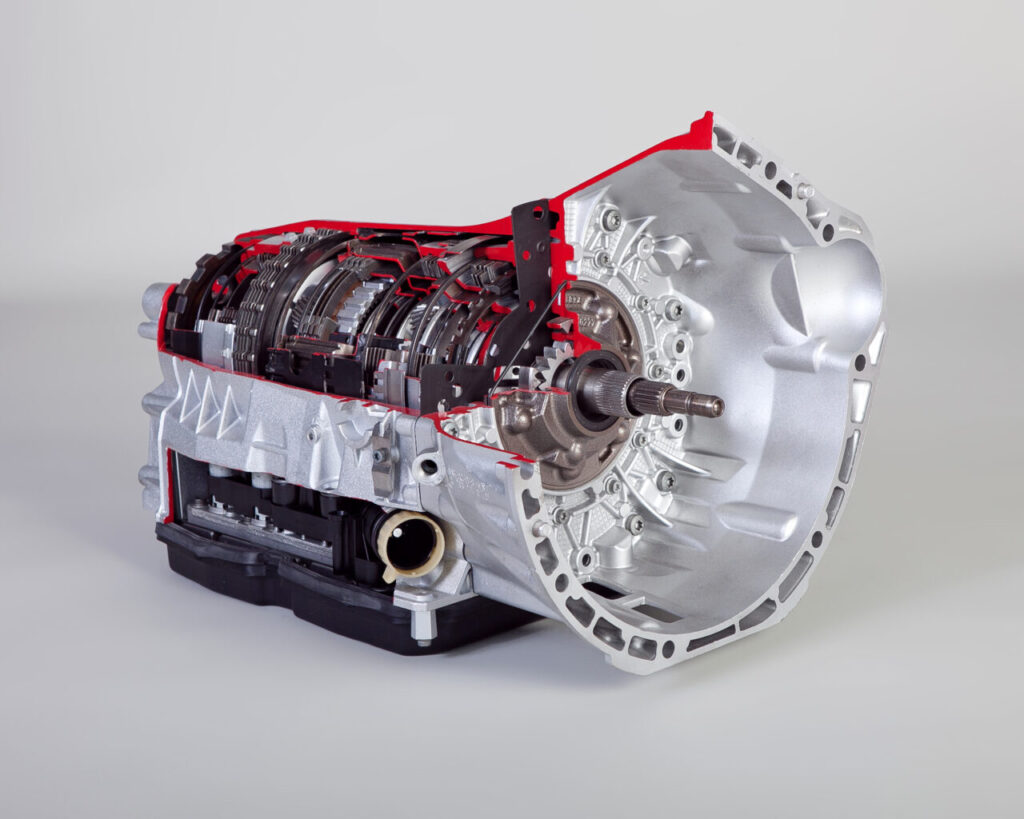
Automatic transmissions have become the preferred choice for many drivers due to their ease of use and smooth driving experience. In this article, we’ll take a deep dive into the world of automatic transmissions and explore some of the best options available today.
What is an Automatic Transmission?
An automatic transmission is a type of transmission that shifts gears automatically without the need for manual input from the driver. This type of transmission has become increasingly popular over the years due to its ease of use and the fact that it provides a smooth driving experience.
How do Automatic Transmissions Work?
Automatic transmissions use a complex system of gears, clutches, and hydraulic systems to shift gears automatically. The transmission’s control module monitors various sensors and uses the information gathered to determine the optimal time to shift gears.
Best Automatic Transmissions in 2023
Now that we’ve covered the different types of automatic transmissions, let’s take a look at some of the best options available on the market today.
First, let’s understand the options available…
Types of Automatic Transmissions
There are several types of automatic transmissions available on the market today. Each type has its own unique set of advantages and disadvantages.
Traditional Automatic Transmission
Traditional automatic transmissions are the most common type of automatic transmission. They use a hydraulic torque converter to transfer power from the engine to the transmission. Traditional automatic transmissions are known for their smooth shifting and ease of use. However, they are less fuel-efficient than other types of automatic transmissions.
Dual-Clutch Transmission
Dual-clutch transmissions are becoming increasingly popular in high-performance vehicles. They use two clutches to shift gears quickly and efficiently. Dual-clutch transmissions are known for their lightning-fast shifts and excellent fuel efficiency.
Continuously Variable Transmission
Continuously variable transmissions (CVT) use a system of belts and pulleys to provide an infinite number of gear ratios. CVTs are known for their excellent fuel efficiency and smooth driving experience. However, they can be noisy and may not provide the same level of performance as other types of automatic transmissions.
Automated Manual Transmission
Automated manual transmissions are a hybrid between a manual and an automatic transmission. They use a traditional manual gearbox, but with the addition of an automated clutch and shifting system. Automated manual transmissions provide a more engaging driving experience than traditional automatic transmissions, but they can be less smooth and may require more maintenance.
Best Automatic Transmission - CVT transmission
While traditional manual and automatic transmissions are the norm, there’s a new kid on the block that’s gaining popularity – the continuously variable transmission, or CVT for short.
Unlike traditional transmissions that use a set number of gears to control the speed and torque of the engine, a CVT transmission uses a belt and pulley system to provide a seamless and continuous transition between gear ratios.
This means that the engine can operate at its most efficient speed at all times, resulting in improved fuel efficiency.
Benefits of a CVT Transmission
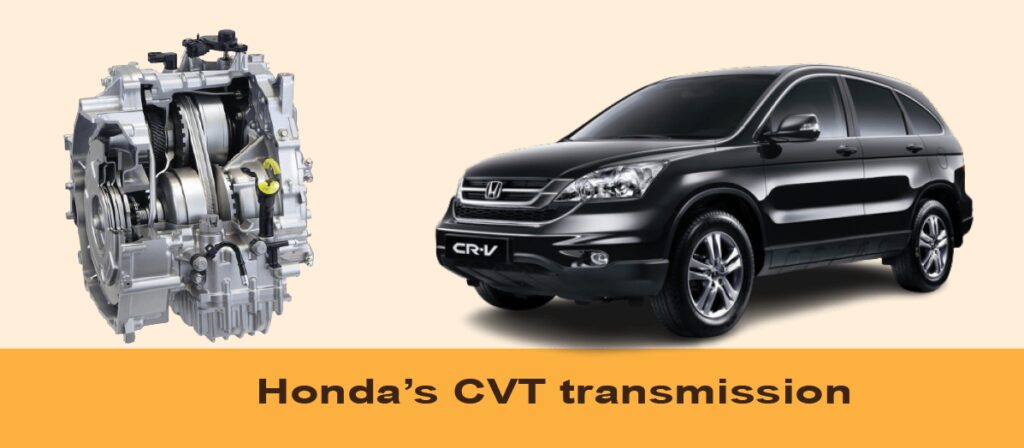
So, what makes a CVT transmission the best option for drivers? Let’s take a closer look at some of the benefits.
Improved Fuel Efficiency
One of the biggest advantages of a CVT transmission is its ability to provide better fuel efficiency. The engine can operate at its most efficient speed, resulting in better gas mileage. This is especially beneficial in city driving conditions where stop-and-go traffic can cause fuel consumption to increase.
Reliability and Durability
Another benefit of a CVT transmission is its reliability and durability. With fewer moving parts compared to traditional transmissions, there’s less chance of something breaking down or wearing out. This can lead to lower maintenance costs and fewer repairs over the lifetime of the vehicle.
Smooth Driving Experience
Thanks to the seamless transition between gear ratios, CVT transmissions offer a smooth and comfortable driving experience. This is especially helpful in stop-and-go traffic or on hilly terrain, where traditional transmissions can feel clunky and jarring.
Popular Cars with CVT Transmissions
Many car manufacturers are now incorporating CVT transmissions into their vehicles. Some of the most popular cars with CVT transmissions include the Honda Civic, Toyota Corolla, and Nissan Altima. These vehicles offer a smooth and enjoyable driving experience, along with improved fuel efficiency.
Choosing the Right CVT Transmission
When considering a vehicle with a CVT transmission, it’s important to keep in mind that not all CVTs are created equal.
Some may prioritize fuel efficiency over performance, while others may provide a more enjoyable driving experience. It’s always a good idea to test drive multiple vehicles with different types of CVT transmissions to determine which one best meets your needs.
In order of most reliable to least reliable CVT transmission here is the list:
- Honda CVT (best)
- Toyota CVT
- Subaru CVT
- Hyundai /KiaCVT (IVT)
- Nissan CVT (worst)
Best Automatic Transmission - 6-speed DSG
The 6-speed DSG transmission, or Direct Shift Gearbox, is a type of dual-clutch transmission developed by Volkswagen Group.
How the 6-speed DSG Transmission Works
The 6-speed DSG transmission works by using two separate clutches for odd and even gears.
The odd gears are located on one clutch, while the even gears are located on the other clutch. When driving in a particular gear, the next gear is pre-selected by the transmission’s computer, and the second clutch is activated.
When it’s time to change gears, the computer simply disengages one clutch and engages the other, allowing for quick and seamless gear changes.
One of the benefits of the 6-speed DSG transmission is that it’s capable of predicting the driver’s next move.
The transmission’s computer uses data from various sensors and the driver’s behavior to predict the next gear change. This allows the transmission to respond quickly and provides a smoother driving experience.
Advantages of 6-speed DSG Transmission
The 6-speed DSG transmission offers several advantages over other types of transmissions. Here are some of the key benefits of this type of transmission:
- Smooth and seamless gear changes: The dual-clutch design of the 6-speed DSG transmission allows for quick and seamless gear changes without any interruption in power delivery.
- Improved fuel efficiency: The 6-speed DSG transmission is more efficient than traditional automatic transmissions, thanks to its dual-clutch design and ability to pre-select gears.
- Better performance: The 6-speed DSG transmission is capable of providing better acceleration and performance than traditional automatic transmissions.
- More responsive: The transmission’s ability to predict the driver’s next move allows for quicker, more responsive gear changes.
Disadvantages of 6-speed DSG Transmission
While the 6-speed DSG transmission has many advantages, there are also some potential downsides to consider. Here are a few disadvantages of this type of transmission:
- Cost: The 6-speed DSG transmission is more expensive than traditional automatic transmissions, which can add to the overall cost of a vehicle.
- Maintenance: Dual-clutch transmissions like the 6-speed DSG require more maintenance than traditional automatic transmissions, including regular fluid changes.
- Limited towing capacity: The 6-speed DSG transmission is not well-suited for towing heavy loads, as it’s designed for passenger vehicles.
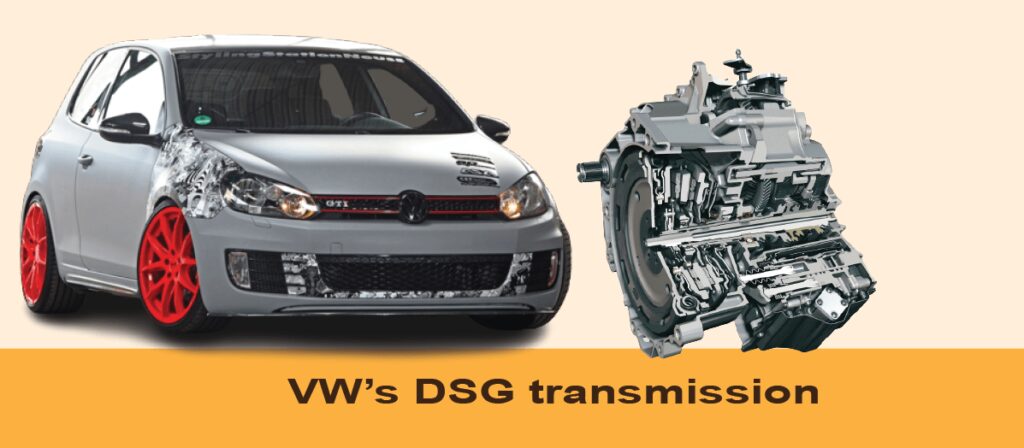
Cars using the DSG transmission
We rank the best to worst in this list of cars using the DSG (Direct-Shift Gearbox) automatic transmission.
First introduced by Volkswagen in 2003 and has since become popular in many high-performance cars.
Volkswagen DSG – (best)
As the inventor of the DSG transmission, Volkswagen has continued to refine and improve upon this technology over the years.
Their latest DSG transmissions, found in models such as the Golf GTI and the Audi S3, are among the best in the market. With lightning-fast shifts and smooth power delivery, these transmissions are a joy to use.
Porsche PDK
This is another excellent DSG transmission that is known for its speed and precision. Found in many Porsche models, including the 911 and the Cayman, the PDK offers lightning-fast shifts and excellent fuel economy.
BMW DCT
BMW’s DCT (Dual-Clutch Transmission) is found in many of their high-performance cars. With its precise and lightning-fast shifts, the DCT helps to maximize the performance of these cars. It is also known for its smoothness and efficiency.
Audi S-Tronic
Found in many of their high-performance models, such as the RS5 and the R8, the S-Tronic offers lightning-fast shifts and smooth power delivery.
Ford PowerShift
Ford’s PowerShift DSG transmission is found in many of its models, including the Fiesta and the Focus. Unfortunately, Ford has not been able to match the success of VW with the DSG leaving owners of the Fiesta and Focus with serious transmission problems and disatisfaction.
Best Automatic Transmission - 5 SPEED Mercedes auto
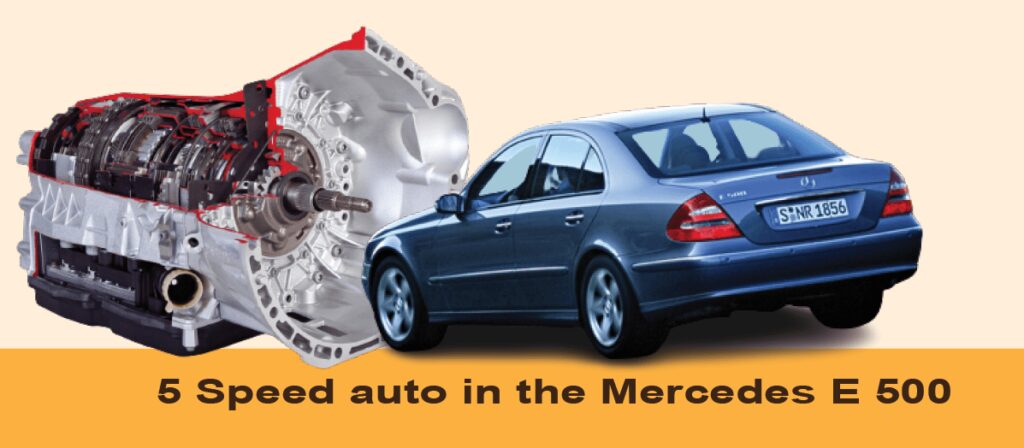
Mercedes-Benz has been producing automatic transmissions for decades and has a reputation for quality and reliability.
One of their popular transmission options is the 5-speed automatic transmission, which has been used in many of their models over the years. With features like:-
Smooth Shifting
One of the most significant advantages of the 5-speed Mercedes automatic transmission is its smooth shifting. That is the ultimate driving experience without a doubt. And it also helps to improve fuel efficiency by optimizing the gear ratios.
Durable Design
The 5-speed Mercedes automatic transmission is built to last. The transmission is built using high-quality materials and components, ensuring its durability and reliability. With proper maintenance and care, this transmission can last for many years without any issues.
Excellent Performance
The performance of the 5-speed Mercedes automatic transmission is unmatched. It provides quick acceleration and responsive handling, making it ideal for drivers who value performance.
Additionally, the transmission is compatible with a range of engines, allowing it to deliver excellent performance across many different models.
Cost-Effective
Compared to newer transmission options, the 5-speed Mercedes automatic transmission is a cost-effective choice. It is a reliable and durable transmission that can provide many years of service without requiring costly repairs or maintenance.
This makes it an excellent choice for drivers who want a quality transmission without breaking the bank.
Easy to Maintain
The 5-speed Mercedes automatic transmission is relatively easy to maintain. With regular maintenance and care, the transmission can last for many years without any issues. Routine maintenance tasks, such as changing the transmission fluid and filter, can be done at home or at a local mechanic.
cars using the the 5 SPEED mercedes auto transmission
The 5-speed Mercedes automatic transmission has been used in a variety of Mercedes-Benz models over the years. Some of the most popular cars that use this transmission include:
Mercedes C-Class – C240, C320, and C55 AMG
Mercedes E-Class – E320 and E500
Mercedes S-Class – S430 and S500
Mercedes SL-Class – SL500 and SL55 AMG
Mercedes CLK-Class – CLK320 and CLK500
Mercedes ML-Class – the ML320 and ML500
Best Automatic Transmission - ZF - 8 Speed
The ZF-8 transmission is an impressive feat of engineering that has become a standard in many of today’s high-end vehicles. With its advanced features and unparalleled performance, it’s easy to see why so many car manufacturers are turning to the ZF-8 transmission to power their latest models.
One of the key benefits of the ZF-8 transmission is its ability to provide smoother and more efficient shifting.
With eight speeds, the transmission is able to quickly and seamlessly find the optimal gear ratio for any given driving situation.
This results in a smoother and more comfortable driving experience for the driver and passengers alike.
But it’s not just about comfort. The ZF-8 transmission is also known for its impressive fuel efficiency. By allowing the engine to operate at peak efficiency, the transmission is able to deliver better fuel economy and reduced emissions.
This is especially important in today’s eco-conscious world, where drivers are increasingly looking for more sustainable options.
Another advantage of the ZF-8 transmission is its real-time adaptability.
By constantly monitoring driving conditions and adjusting the shift pattern accordingly, the transmission is able to deliver optimal performance no matter the situation.
Whether you’re navigating through city traffic or cruising on the open highway, the ZF-8 transmission is always working to provide the smoothest and most efficient ride possible.
Of course, as with any advanced technology, there is a higher price tag associated with the ZF-8 transmission. However, for those who are willing to invest in the best, the benefits are clear.
With its smooth shifting, impressive fuel efficiency, and real-time adaptability, the ZF-8 transmission is quickly becoming a must-have feature in high-end vehicles.
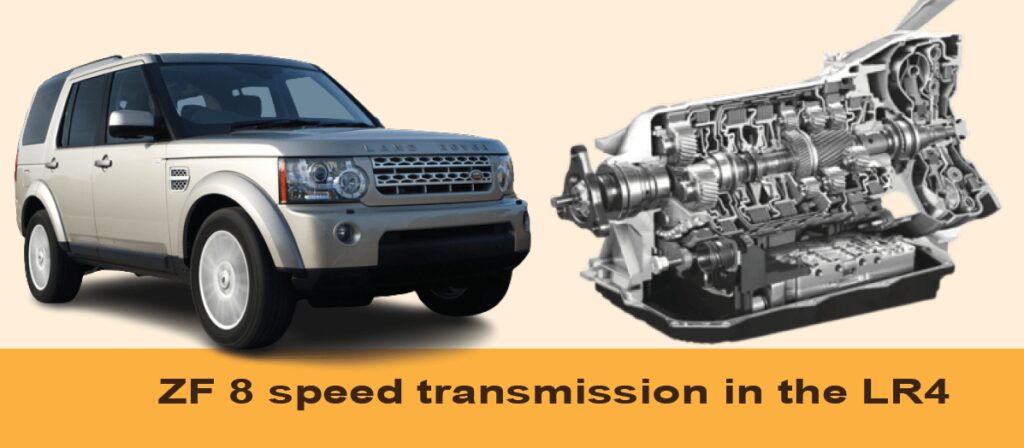
list of cars using the ZF-8 TRANSMISSION
- BMW 3 Series:
- Audi A4
- Jaguar XF
- Land Rover Range Rover
- Chrysler 300
Best Automatic Transmission - Porsche PDK
PDK stands for Porsche Doppelkupplungsgetriebe, which translates to Porsche Double-Clutch Transmission.
This innovative technology was first introduced by Porsche in 2009 and quickly became a favorite among driving enthusiasts.
Porsche’s PDK transmission is an advanced and sophisticated dual-clutch transmission system that is designed to provide lightning-fast gear changes, exceptional performance, and improved fuel efficiency.
Here are some of the main features and benefits of the Porsche PDK transmission:
Lightning-Fast Gear Changes: The PDK transmission uses two separate clutches that operate independently of each other.
This allows the transmission to pre-select the next gear, which means that when the driver shifts gears, the gear change can be completed in as little as 8 milliseconds. This lightning-fast gear change results in improved performance and a more engaging driving experience.
Improved Fuel Efficiency: By pre-selecting the next gear and minimizing the time that the engine spends in between gears. The PDK transmission is able to keep the engine operating at its most efficient range, which helps to reduce fuel consumption and lower emissions.
Multiple Driving Modes: The PDK transmission also offers multiple driving modes, including Normal, Sport, Sport Plus, and Individual. These modes adjust the shift points, throttle response, and other settings to provide a customized driving experience that can range from comfortable and efficient to aggressive and sporty.
Manual Control: The PDK transmission also allows for manual control, which means that the driver can use paddle shifters or a manual shifter to control the gears. This provides the driver with greater control over the vehicle and allows for a more engaging and exciting driving experience.
Lightweight Design: The PDK transmission is also designed to be lightweight, which helps to improve the car’s handling and overall performance. The lighter weight also helps to reduce fuel consumption and improve fuel efficiency.
One of the latest innovations in the Porsche PDK transmission is the addition of a seventh gear, which provides improved fuel efficiency at higher speeds. This new gear allows the engine to run at a lower RPM while cruising, which reduces fuel consumption and emissions without sacrificing performance.
Another key feature of the Porsche PDK transmission is its ability to work seamlessly with other systems in the car, such as the engine, suspension, and electronic stability control.
By communicating with these systems, the PDK transmission can deliver even more precise and responsive performance, ensuring that the car feels as though it’s an extension of the driver’s body.
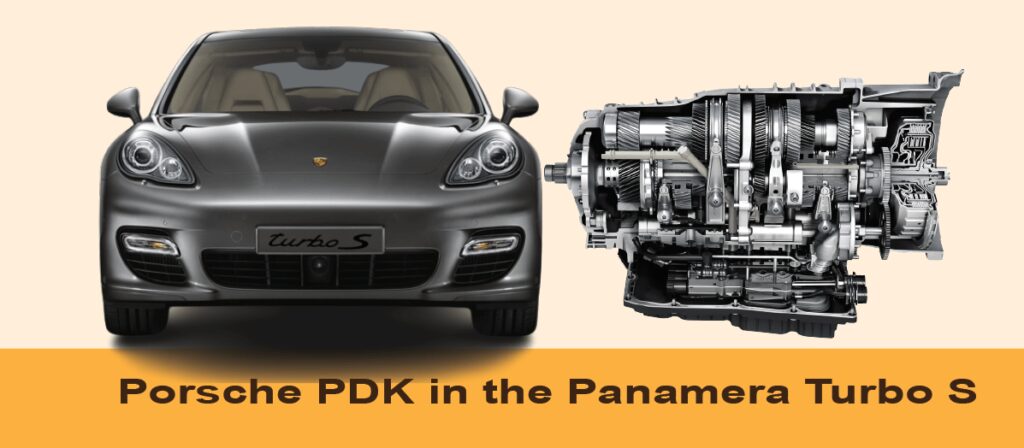
list of cars using the Porsche PDK Transmission
The Porsche PDK transmission is a highly advanced and sophisticated transmission that is available in a range of Porsche models, including:
- Porsche 911, Carrera S, Carrera 4, Carrera 4S, Targa 4, and Targa 4S.
- Porsche Boxster, Boxster S, and Boxster GTS.
- Porsche Cayman, Cayman S, and Cayman GTS.
- Porsche Panamera, Panamera 4, Panamera 4S, Panamera 4 E-Hybrid, Panamera Turbo, and Panamera Turbo S E-Hybrid.
- Porsche Macan, Macan S, Macan GTS, and Macan Turbo.
Best Automatic Transmission - 4 speed Toyota autos
We saved the best for last because we cannot wrap up this discussion without mentioning Toyota.
When it comes to reliable and efficient vehicles, Toyota is a brand that’s hard to beat. And for many years, one of their most popular transmissions has been the 4-speed automatic.
While it may not have as many gears as some newer transmissions, the 4-speed automatic has proven to be a reliable and long-lasting option for many Toyota drivers.
So, what makes the 4-speed automatic transmission such a popular choice? For starters, it’s a simple and straightforward design that’s easy to maintain.
With only four gears, there are fewer parts to worry about, which means fewer things can go wrong. And even when something does need to be fixed, it’s usually a relatively easy and affordable repair.
Another benefit of the 4-speed automatic is that it offers smooth and predictable acceleration.
While some newer transmissions may have more gears, the 4-speed automatic provides a consistent and reliable driving experience. Whether you’re accelerating onto the highway or cruising around town, you can count on the 4-speed automatic to provide a smooth and comfortable ride.
Another advantage of the 4-speed automatic transmission is its compatibility with various Toyota models.
This transmission has been used in many Toyota vehicles over the years, including the Camry, Corolla, RAV4, and Tacoma, among others. This means that if you’re in the market for a used Toyota, you’ll have plenty of options to choose from, all with the reliable and efficient 4-speed automatic transmission.
Of course, one downside of the 4-speed automatic is that it may not be as fuel-efficient as some newer transmissions.
With fewer gears, the engine may not be able to operate at its most efficient speed at all times. However, for many drivers, the reliability and ease of maintenance of the 4-speed automatic more than makeup for this slight decrease in fuel efficiency.
One thing to keep in mind, however, is that newer Toyota models may not come with the 4-speed automatic transmission.
As technology continues to advance, many manufacturers are moving towards more advanced transmissions with more gears and greater fuel efficiency.
That being said, there are still plenty of used Toyota models available with the 4-speed automatic transmission, making it a great choice for those on a budget or those who prefer a simpler driving experience.
Cars using the Toyota 4-speed automatic transmission

The Toyota 4-speed automatic transmission has been used in a variety of Toyota models over the years. Here is a list of some of the most popular Toyota models that have used the 4-speed automatic transmission:
- Toyota Camry
- Toyota Corolla
- Toyota RAV4
- Toyota Tacoma
- Toyota Tundra
- Toyota 4Runner
- Toyota Sienna
- Toyota Highlander
- Toyota Land Cruiser
- Toyota Sequoia
DCT vs CVT: Which is better?
We compare the two types of transmissions in a Q and A…
Are DCTs more fuel-efficient than CVTs?
No, CVTs often consume less fuel than DCTs. A CVT’s continuously variable gear ratios enable the engine to run at peak performance, improving fuel economy.
Do DCTs require frequent maintenance?
Compared to CVTs, DCTs might need more frequent maintenance. Higher maintenance expenses may be caused by the complexity of DCTs and the requirement for routine clutch replacements.
Which transmission is better for a sporty driving experience?
DCTs are typically the favored option if a sporty driving experience is important to you. For enthusiasts looking for dynamic performance, DCTs are the best choice because of their quick gear changes and engaging feel.
Are CVTs more affordable than DCTs?
Yes, CVTs are typically less expensive than DCTs. Because of its more straightforward design and cheaper production costs, CVTs are an affordable choice for purchasers on a tight budget.
Do CVTs provide a smoother driving experience?
It’s true that CVTs are renowned for their fluid and slick power delivery. Traditional gear shifts are not present, ensuring smooth acceleration and a pleasant driving experience.
Which transmission is better for city driving?
Due to their smoothness and fuel efficiency, CVTs are ideal for city driving. Because the gear ratios are continuously changeable, CVTs are perfect for stop-and-go traffic because they maximize the engine’s power output.
We’ll let you choose which one is better.
Wrapping up
In conclusion, choosing the best automatic transmission for your vehicle is crucial for its performance and reliability.
Traditional automatic transmissions and continuously variable transmissions (CVTs) are the two main types of transmissions to consider.
While traditional automatic transmissions are reliable and offer smooth shifting, they can be less fuel-efficient and expensive to repair. On the other hand, CVTs provide a seamless driving experience and better fuel efficiency but may not be as durable.
When choosing a transmission, consider your driving needs, budget, and the vehicle’s specifications. By carefully weighing these factors, you can make an informed decision and select the best automatic transmission for your vehicle.
Our top picks
